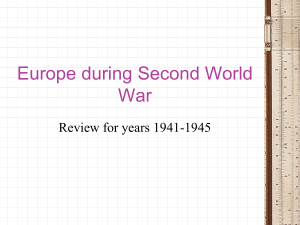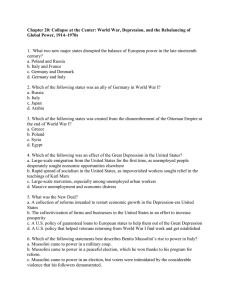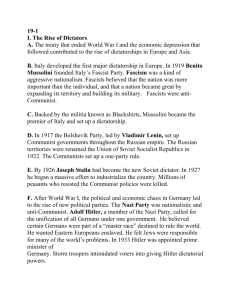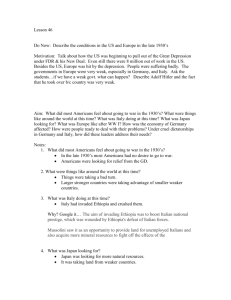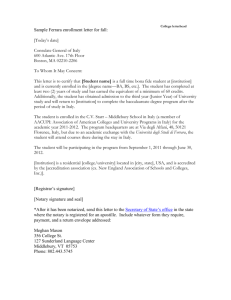Causes of World War II M ilitarism A lliances I mperialism
advertisement
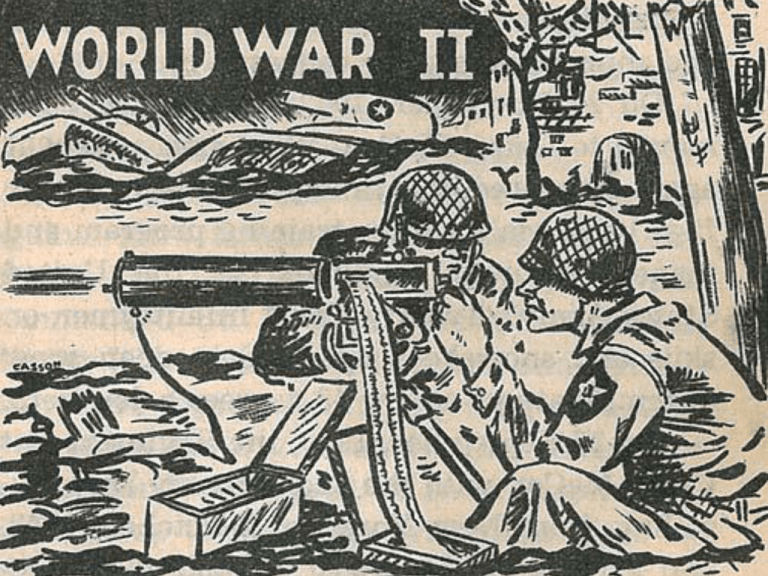
M ilitarism A lliances I mperialism N ationalism NC 464-470;475 HA 417-419 M ilitarism A lliances •Dictators •Nazi’s •Mussolini – Facism •Japan – military overthrew government •Axis (Central) Powers – Germany, Italy, Japan •Allied Powers – England, France, USSR, USA, … I mperialism N ationalism •Italy – North Africa •Germany – Europe •Japan – Asia and Pacific Islands Facism – government that uses extreme form of nationalism Nazi – German pride World War I resolutions: Germany – had to take the blame, lost land, lost all their overseas colonies, had to disarm, had to pay for damages Italy – felt cheated Japan – felt ignored by European powers World-wide Depression – Europe was devastated and left in debt, widespread unemployment ATTACKS! Hitler moves into Austria, then Czechoslovakia, then attacks Poland September 1, 1939 Italy moves into North Africa – Ethiopia Japan occupies Manchuria, then attacks Pearl Harbor on December 7, 1941 Benito Mussolini Adolph Hitler Joseph Stalin Italy Fascist Germany Nazi Soviet Union Communism In Common: Imperialistic attitude – conquer other nations Ruthlessly crushed opponents Believed in an extreme form of nationalism Believed government should control economic and social life Rulers in Europe during World War II The place where Jews were placed to be persecuted by Nazis. Originally used as a term to imprison political opposition, the Holocaust made the term synonymous with “extermination camps”. The Japanese attacked a U.S. naval base on Dec. 7, 1941 causing the U.S. to declare war on Japan. http://www.youtube.com/watch?v=Sv1niwxQgoY http://www.youtube.com/watch?v=TX4sTBJ0tvA SpeakeR Occasion Audience Purpose Subject TONE - The next day, December 8, 1941, President Roosevelt addressed Congress and the nation in a broadcast heard worldwide. He called December 7th as, “a date which will live in infamy”. He then called for a declaration of war against Japan and its Axis allies in Europe. An immensely powerful weapon of mass destruction whose violent energy comes from splitting the atom. It was used to end World War II when one was dropped on Hiroshima, Japan on August 6, 1945 and Nagasaki on August 9. Over 200,000 Japanese were killed by these two bombs. No nuclear weapon has ever been used since, but has created world-wide http://www.youtube.com/watch?v=t19kvUi HvAE controversy. jobs Soldiers military training camps war bonds – raised money POW camps victory gardens recycling Torpedo Junction Hospitals Cemeteries Shipyards ration books – shoes, gas, rubber, metal, and food items: sugar, coffee, meat, butter textile mills – sheets, tents, parachutes, uniforms, . . . military weapons and equipment – rockets, bombs, radar equipment, ships, submarine chasers, minesweepers, merchant ships, ammunition lumber – barracks, boxes, bunks stone – roads mica – insulation tungsten – strengthens steel agricultural products – wheat, potatoes, peanuts, hay

